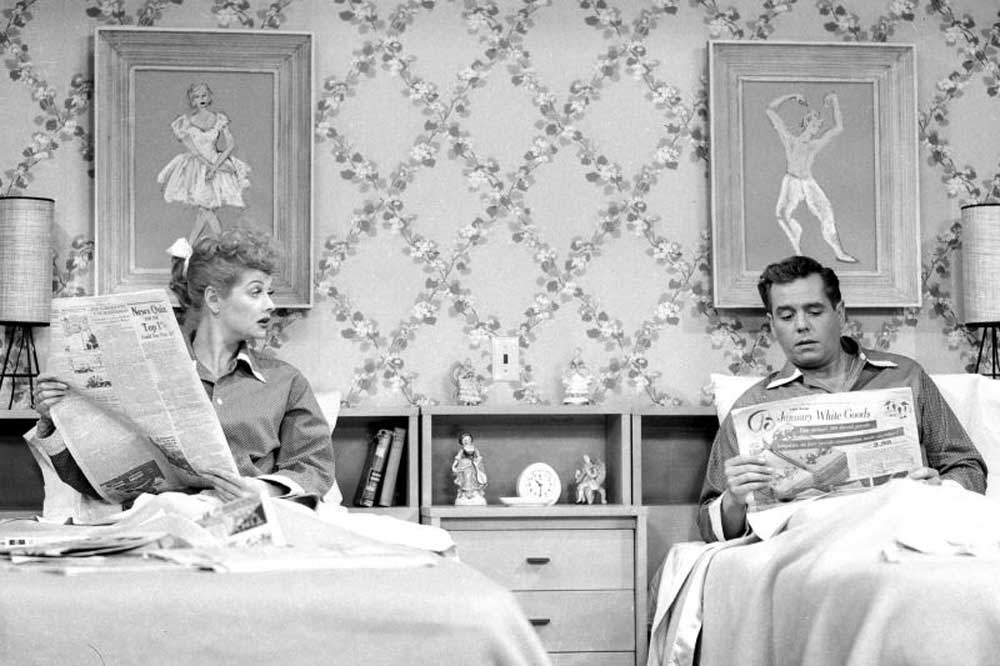Sleeping together has extraordinary benefits. However, it should never come at the cost of good restorative sleep. Individuals who can maintain healthy sleep have higher chances of enjoying a vibrant relationship with their spouse. Good sleep allows them to stay healthy and thrive within their couple.
Good Sleep First
Generally, younger couples or newly formed ones benefit more from sleeping together in the same bed. A 2020 research on such couples showed a 12% increase in sleep benefits, leading to more emotional stability, feelings of safety, and love. New couples are known to better synchronize their sleep patterns with matching elevated levels of serotonin and dopamine – the “feel good” hormones.
However, with time, this synchronicity is lost, and each partner returns to their base level. Many unhealthy sleep hygiene practices in the marital bed can take their toll on individual sleep. Men generally prefer a much colder room, while women may like it a tad warmer. One partner will start watching TV or scrolling on their phone in bed, leaving the spouse uneasy about sleep. The other may use the bedside light to read a book when their spouse prefers total darkness. All these habits are known to disrupt sleep and create tension in the sleep environment.
As couples grow older, sleeping in the same bed or even in the same room can become problematic for one or both spouses. Age-related health problems, dysregulated chronotypes, excessive snoring, and sleep apnea are but a few of what older couples go through during a night spent in the same bed. Women, in particular, are the ones who suffer most from this arrangement: research shows that a woman averages 42% poorer sleep than her husband.
Can you be in a happy relationship if you wake up cranky every morning and barely function during the day? Of course not. Within a couple, prioritizing good individual sleep over poor sleep is important: it helps mental and physical health, leads to better communication, can create more space for special intimacy, and can even save a couple’s relationship from turning sour. Sadly, many people accept the lack of good sleep and suffer in silence during endless nights because they are scared that a different arrangement (than sleeping in the same bed with their spouse) may be perceived as a sign of relationship trouble. This widespread stigma is accepted as reality without any scientific grounds.
A Brief History of How Couples Sleep
You’d be surprised to know that the sleeping habits of healthy couples have been very different over the ages.
In Medieval times, most families slept in one small room. But the wealthy and powerful Lord shared the same marital bed with his Lady within the Lordship Chambers. In this same large room, the couple would be surrounded by the Lady’s Chambermaids and many high-ranking officers, who would sleep in smaller beds to serve and protect their Masters. The marital bed had thick curtains that the couple would draw for intimacy. In those days, sleeping alone was negatively perceived, as solitude and privacy were not safe for rich people. The more one was surrounded, the higher his rank in society.
Over time, things were reversed: bed-sharing became for lower classes. The higher the status, the more separate the couples slept. Middle-class couples shared a bed while the rest of the family shared another, maybe in other house rooms. Very wealthy couples had separate bedrooms for privacy, usually connected to a shared space with a big bed for intimacy.
By the late 19th century, proponents of the “domestic sanitation movement” recommended that couples who sleep in the same room should sleep in two separate beds as a health precaution. Doctors warned of inhaling the partner’s germs and warned that the stronger sleeper would drain the vitality of the weaker sleeper, making the latter sick. By the 1920s, twin beds had become the fashionable bedroom furniture for couples who identified as “modern,” and many thought that twin beds were here to stay.
In the second half of the 20th century, married couples gradually returned to co-bedding, independent of social status. Separate beds began to be seen as a sign of a distant or failing marriage. Nowadays, couples who do not sleep in the same bed are stigmatized as partners having trouble in their relationships; no research supports this claim. As with twin beds, this is just a socially acceptable and modern trend within our current times.
Sleeping Separately
A 2017 research shows that 25% of couples in the United States sleep separately. That is 1 in 4 couples who are together, mostly in a healthy relationship. This figure used to be common among those aged 50+ but is now getting trendy among younger couples. Interior designers are witnessing this rising trend with their young, affluent clients; they are asked to design separate bedrooms where each can have his/her signature style. The young couples claim that sleeping in twin beds makes them feel more at ease, guaranteeing a good night’s sleep.
No matter how you choose to sleep with your second half, be open to the best option that leads you to enjoy enhanced sleep quality.
“Good night, dear,” Lucille Ball used to tell her husband Desi as they each slept in their separate beds in her famous TV show “The Lucy Show.”

